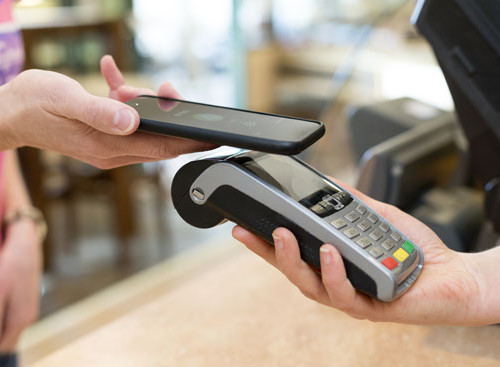As our phones continue to dominate more and more areas of our lives it’s no surprise that they’re beginning to replace our wallets as well. Along with contactless payments with regular cards, virtual cards and apps can allow us to make purchases with our phone alone. The question is, as a retailer, is it worth getting on-board with this technology?
It’s hard to ignore the benefits. The easier you make it for your customers to pay the better. There’s no arguing against that. Contactless payments streamline the buying process. If people like using this service – though let’s be honest, not everyone does – they’ll be more likely to come to retailers who offer it.
If a retailer has a chip and pin machine, offering contactless is just an added extra, as people can still pay with their card in-store. Mobile payments on the other hand are offering another avenue for people to part with their cash.
But will people actually use this method? Are the public comfortable enough with using their smartphones as a payment method?
The answer is yes. Or, at least, a very significant part of the population want to pay with their phones – 47% according to a survey from Oxygen8. While this doesn’t refer to in-store transactions, it demonstrates people are happy to use their phones to pay for everything from bills to groceries. That’s something that any retailer should try to tap into.
Mobile payment service providers like PayPal with their Paypal Here service are particularly useful for street vendors and similar businesses. Usually these businesses run on a cash-only system, but by offering a simple card reader or app option, they can more easily take money without investing in a full-on chip and pin system. It’s a good option for more mobile businesses, such as food vans or market stalls.
Of course, there’s a barrier to making use of this new technology. People are wary about security, especially when it comes to tech. We all know that business security is a top priority, but physical security measures are easy for customers to understand. When it comes to encrypted data and tokenisation, not so much. They’re concepts people are unfamiliar with and they often still struggle to get to grips with them when they’re explained. This means that customers can find it hard to trust them.
This can be a problem. While 47% of people want to pay with their phone, 53% don’t. When companies like Amazon and Xbox are hacked and thousands of credit card details are released, you can understand why people are wary of waving around devices than can transmit our personal data. As previously mentioned, many don’t know how the tech works, so it’s understandable for them to worry about how people could intercept their information, especially after stories about hackable passports.
Luckily, advances are being made. The fact that a phone can make things safer is great news as well. Using GPS, 3G and WiFi, it would be possible to create trusted locations. That means if the phone itself – or the virtual card on it – was used in a place you hadn’t specified, the transaction would be rejected.
In the end mobile and contactless payments might open new opportunities for hackers, but unless people are careless, the concepts are still pretty safe and will continue to improve. They’re worth looking into and while you might have to convince a few people it’s safe, that won’t be a problem for long.






